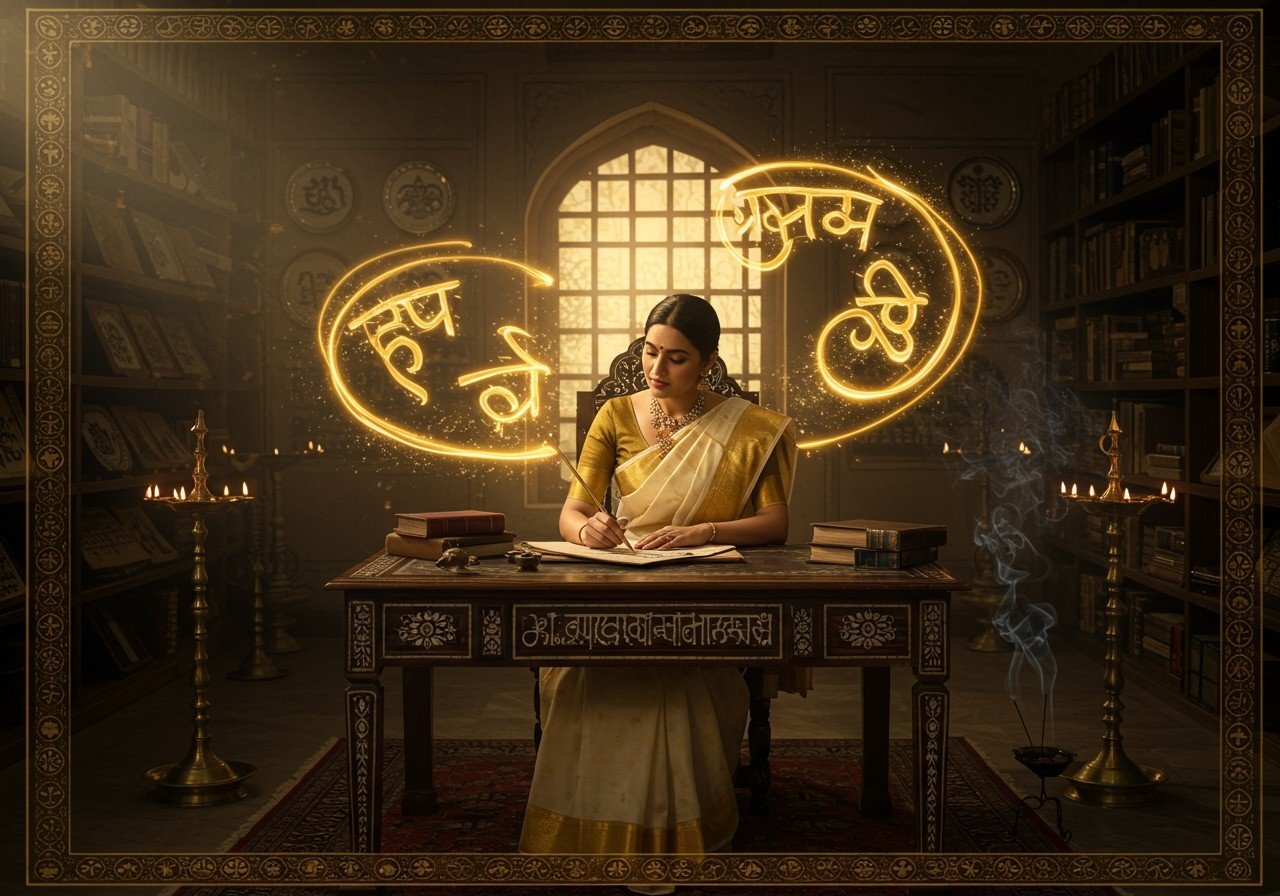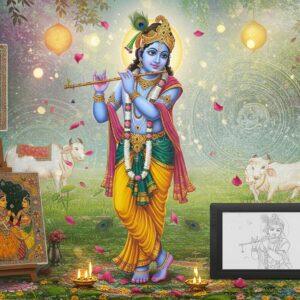
Devanagari calligraphy, the art of crafting sacred scripts, holds a significant place in Indian culture. This intricate form of writing is not just an aesthetic endeavor but a spiritual one, deeply rooted in tradition and history. This blog post will explore various aspects of Devanagari calligraphy, offering insights into its history, tools, techniques, and modern-day applications.
History and Significance
The Devanagari script’s origins trace back to ancient Indian texts and scriptures. This script has played a crucial role in religious and cultural contexts for centuries, evolving from simple inscriptions to complex art forms. It holds a sacred status in Hinduism, Buddhism, and Jainism. Notable calligraphers have contributed significantly to preserving and enhancing this art form, evident in ancient manuscripts and religious texts. Today, there is a revival and growing interest in this art within contemporary Indian society.
Devanagari Calligraphy Fonts
Various Devanagari calligraphy fonts exist, each with unique characteristics. Traditional fonts often appear in religious texts, while modern fonts might grace wedding invitations or artwork. Selecting the right font is essential, as different fonts convey different emotions and messages. Practicing with multiple fonts develops versatility and skill. High-quality Devanagari calligraphy fonts are available both online and offline. Software and tools can also aid in creating digital versions of these fonts.
Tools and Materials
Essential tools for Devanagari calligraphy include calligraphy pens, ink, and paper. Different pen types exist, such as traditional nib pens and modern brush pens. Choosing the best ink is important for crisp, long-lasting calligraphy. Selecting the right paper is crucial, focusing on texture and quality for optimal results. Rulers and guidelines help maintain consistency and precision. Additional accessories like pen holders, ink wells, and cleaning supplies are also useful.
For high-quality calligraphy ink perfect for Devanagari and other sacred scripts, consider Poojn.in. They offer Poojn 15 ml Fountain Pen Ink specifically for puja purposes. This ensures your calligraphy practice aligns with traditional practices.
Techniques
Beginners should start with basic Devanagari calligraphy techniques. Mastering basic strokes and shapes is crucial before attempting complex characters. Practice techniques for creating different line weights and styles. Proper hand posture and grip improve control and comfort. Regular exercises help in practicing common Devanagari characters and words. Patience and practice are key to honing calligraphy skills. Advanced techniques include decorative embellishments and flourishes.
Online Resources
Several online platforms offer valuable resources for learning Devanagari calligraphy. Structured learning and regular practice are essential for progress in this art form.
- Video Tutorials: These provide detailed instructions, especially for beginners learning to use calligraphy pens effectively. Many tutorials demonstrate basic strokes and the formation of Devanagari characters.
- Online Courses: Comprehensive online courses by experts, such as Penkraft (mentioned in recent search results), help master handwritten lettering styles. These courses offer structured learning paths and personalized feedback.
- Practice Workbooks: Downloadable practice sheets are available for self-paced learning, allowing focused practice on specific characters and patterns. (Also highlighted in recent search results)
Conclusion
Devanagari calligraphy is more than just an art; it’s a profound connection to our rich cultural heritage. By understanding its history, exploring various fonts, using the right tools, and practicing techniques, anyone can appreciate and master this sacred script. Whether you are a beginner or an experienced calligrapher, the journey of learning Devanagari calligraphy is rewarding and enriching. Embrace the tradition and let the beauty of Devanagari calligraphy inspire and elevate your artistic expression.
FAQs on Devanagari Calligraphy
What is Devanagari calligraphy? Devanagari calligraphy is the art of writing the Devanagari script in a decorative and artistic manner, using special techniques and tools to create beautiful and intricate designs.
What tools do I need? You’ll need specific tools like Devanagari calligraphy pens, brushes, ink, and special paper designed for this script.
Can I learn online? Yes, numerous online courses, tutorials, and workshops teach Devanagari calligraphy, catering to both beginners and advanced learners.
What are Devanagari calligraphy fonts? These are digital representations of the Devanagari script in various artistic styles, usable in digital design projects.
Is it difficult to learn? It can be challenging initially, but with practice and guidance, anyone can master it. Start with basic strokes and gradually progress to complex designs.
Where can I buy supplies? You can find Devanagari calligraphy supplies online at stores specializing in calligraphy tools and materials. Poojn.in offers a variety of puja-related items, including Camlin Fountain Pen Ink (60ml bottle) suitable for calligraphy.
Why is it important? Devanagari calligraphy preserves a traditional art form and cultural heritage, adding sacred and aesthetic value to the written script.
What are the benefits of practicing? Practicing improves concentration, patience, and fine motor skills, while also allowing for creative expression and connection with cultural roots.


